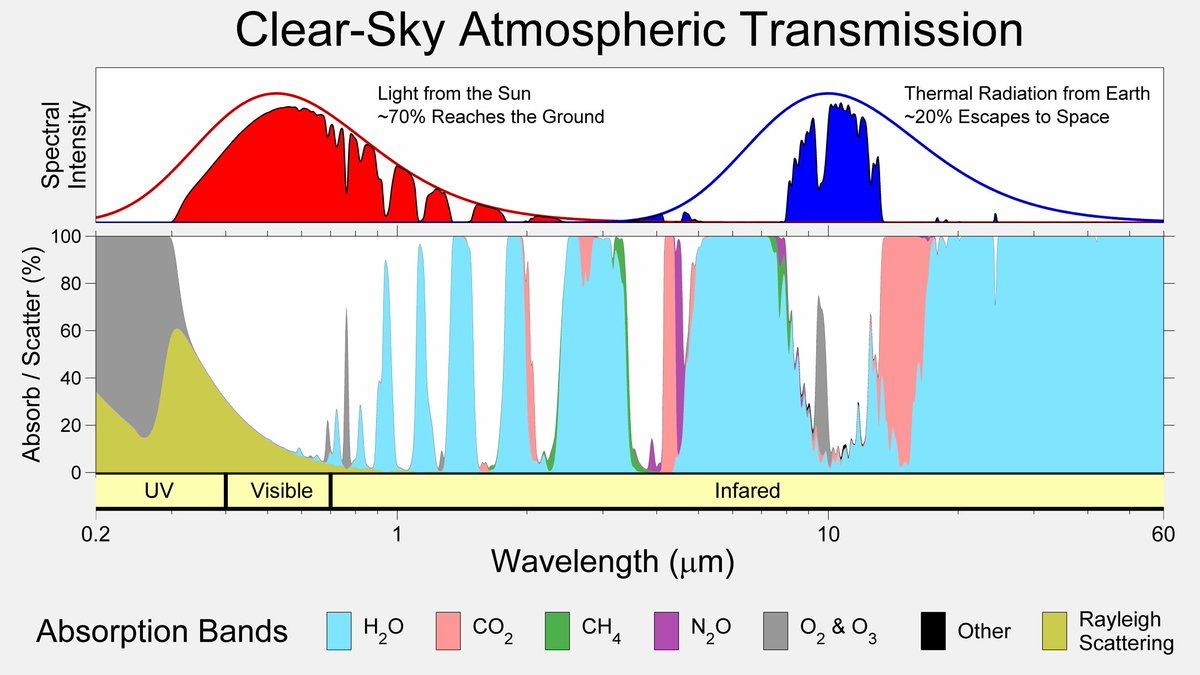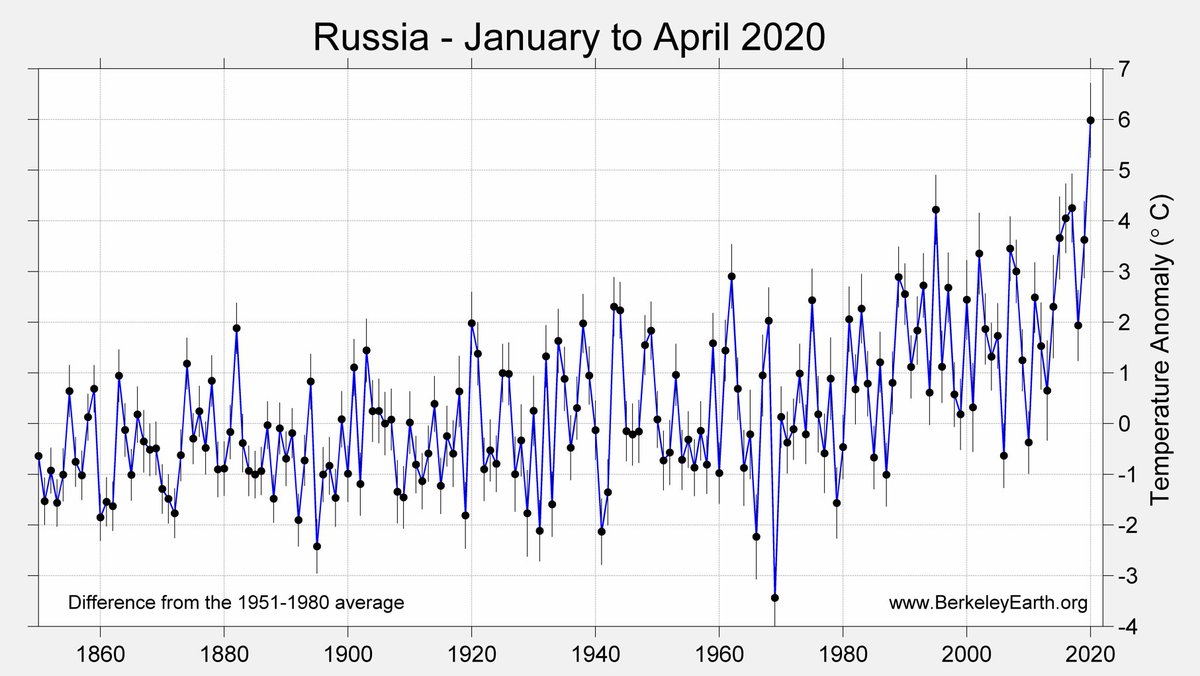
Simple comparison between global mean temperature and carbon dioxide.
This is not the whole story of global warming, far from it, but it is a useful place to start.
This is not the whole story of global warming, far from it, but it is a useful place to start.

Of course, correlation is not causation.
That's why physical understanding is needed.
We have understood for well over 100 years that carbon dioxide (CO₂) absorbs thermal radiation from the Earth's surface and contributes to the greenhouse effect.
That's why physical understanding is needed.
We have understood for well over 100 years that carbon dioxide (CO₂) absorbs thermal radiation from the Earth's surface and contributes to the greenhouse effect.

The greenhouse effect is the process by which Earth's atmosphere captures and recycles energy from the Earth's surface.
This results in an Earth approximately ~30 °C (55 °F) warmer than one would expect without an atmosphere.
This results in an Earth approximately ~30 °C (55 °F) warmer than one would expect without an atmosphere.

The most important greenhouse gas is water vapor, responsible for ~78% of absorbed surface thermal radiation.
The second most important is carbon dioxide (~19%).
Human activities have increased carbon dioxide in the atmosphere by 50%, leading to most of the warming we observe.
The second most important is carbon dioxide (~19%).
Human activities have increased carbon dioxide in the atmosphere by 50%, leading to most of the warming we observe.

• • •
Missing some Tweet in this thread? You can try to
force a refresh












